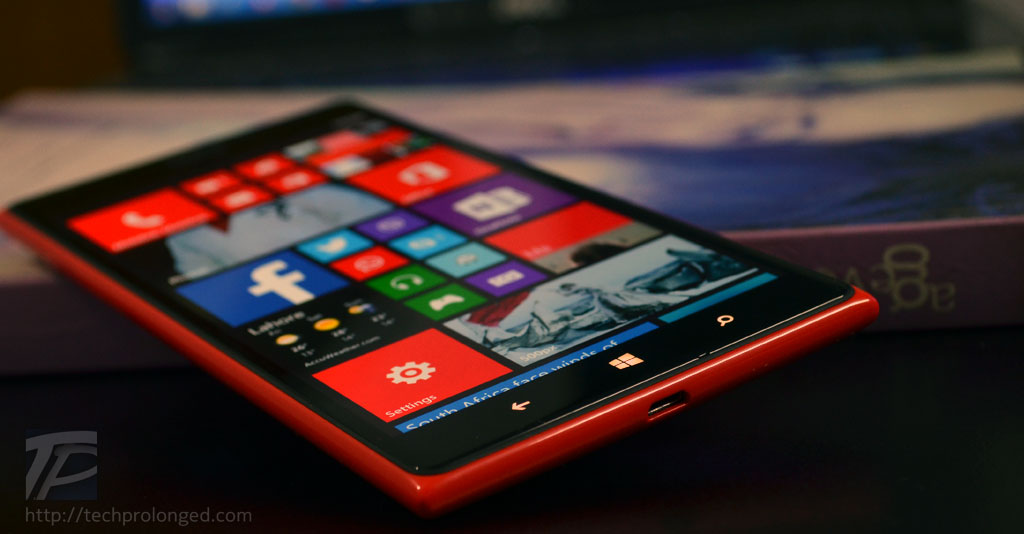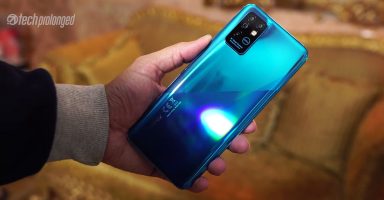Camera, Still Photos, Video Samples
Camera: The genes of PureView
Nokia Lumia 1520 is the latest addition to the devices with the PureView camera features that actually keeps it above all the phablets in the competition regarding the camera capability and performance.
We have done an extensive camera review for Nokia Lumia 1020 with its 41 megapixels larger sensor. So I am just reserving an other extensive camera review for Lumia 1520 but here we have yet much detail about the camera this phablet has got.
The camera in Lumia 1520 keeps it ahead of the competitive phablets
One simple line about it is of course the fact that the camera in Lumia 1520 keeps it ahead of the competitive phablets for that exclusive purpose. However the 20 megapixels sensor in Lumia 1520 is smaller in size that’s just 1/2.5 (0.4) inch if compared to the Lumia 1020 that’s got 1/1.5 (0.67) inch on sensor – let alone the Nokia 808 PureView with its 1/1.2 (0.8) inch sensor, but it’s way too good when comparing with its competitors. But wait there is a contender with a bit larger sensor. Sony’s Xperia Z1 has got 1/2.3” sensor where it has about 8% more sensor area, but we haven’t compared both with the photo result.
Camera Specifications in Lumia 1520
- 20MP PureView Camera
- Physical sensor size and type: 1/2.5-inch BSI CMOS
- Lens Type: f/2.4 aperture lens with 6 elements
- Focal length: 26mm equivalent
- Optical Image Stabilization
- dual LED flash
- 2x lossless soft zoom
- Front-facing, 1.2MP “wide angle” camera
Lumia 1520 has been tagged with the PureView but it does not inherit a lot of from the PureView family. The camera has smaller lens opening which is f/2.4. There is no Xenon flash either for capturing in dark perfectly. There indeed is the presence of Optical Image Stabilizer for which we can say that it mostly matches with the starting PureView Lumia range e.g. Lumia 920, Lumia 925 with improved sensor but it can’t match with the recent Lumia 1020 has each bit to shoot in low-light including the larger aperture and Xenon Flash and on top of that is the larger sensor with maximum pixels.
The optical image stabilizer in Nokia’s PureView devices really worth complements. No matter it can’t match with the results produced with the Lumia 1020, but it still can shoot in much easy way in dark. Nokia Camera (aka Nokia Pro Cam) is he helper for you. The app is one of the best software features Windows Phone has got. (Nokia Camera with Nokia Lumia 1020, Nokia Pro Cam with Nokia Lumia 925)
The very healthy battery of 3400mAh helps a lot when you go out for shooting. That’s where I hesitated a little with Lumia 1020. More than a day can be managed very easily with Lumia 1520 when charged fully before you need to charge it again. Another thing Lumia 1520 has got an edge from Lumia 1020 is the performance. Yes! with the powerful quad-core Snapdragon 800 which is made actually to process more than 20 megapixels from the image sensor, Lumia 1520 shoots way faster than Lumia 1020. I’ll say here that there is still no driver for Nokia’s 41 megapixels camera on Lumia 1020. Snapdragon S4 Plus in Lumia 1020 which was also capable to process up to 20 megapixels, Nokia did pretty well with Windows Phone 8 OS to process as much as 41 megapixels that ended with some performances issues such as shot-to-shot delay. So according to numbers Lumia 1520 takes about 3 seconds to bring up the camera interface in front and make it ready. Later startup time is little faster. Then shot-to-shot time delay is about 1.5 seconds which is significant improved when compared to Lumia 1020 but that still stays behind the competition where latest Android shoots faster with the camera as does the latest iPhones. Sure their camera modules and sensors are not matched with the ones in Lumia 1520 or either from Nokia.
We have learnt about the term “PureView” since the days of Nokia 808 PureView where the basic technique was to oversampling the pixels and produce much improved image with great detail and as less digital noise as unnoticeable. Then Nokia introduced Optical Image Stabilization in their “PureView” tagged cameras. But later came the combination of both in Nokia Lumia 1020 PureView. Now we have Nokia Lumia 1520 again backwards from 41 megapixels to 20 megapixels which is still higher in numbers than most of the competition as well as the image sensor that’s larger in size. Going backward, Lumia 1520 still has guts in photography and its performance due to improved core hardware as mentioned above.
During the Symbian days the color reproduction from Nokia devices was used to be much accurate, that I always appreciated. Later in Windows Phone devices including Lumia 1020, the oversaturation of colors had become an issue to most of the users. Nokia listened to the feedback and fixed at where they were wrong and they shipped the Nokia Black software update reverting back and fixing the issues even on Lumia 1020.
Lumia 1520 comes with Nokia Black software update pre-installed, hence with color reproduction, it’s as accurate to natural as possible to match the saturation of Nokia 808 PureView. There is still no presence of auto HDR feature in camera where you can shoot with bracketing and combine the image on your computer to produce HDR images. Once again, the dynamic range is impressive in both still and video recording. A slight problem with managing white balance, but that’s an easy task for you to manual choose white balance from the “WB” ring on the interface.
Outdoor shots with automatic settings where Lumia 1520 mostly used base ISO 100 in bright sunlight.
Theoretically like Nokia 808 PureView and Lumia 1020 PureView, the Lumia 1520 also shoots with its maximum 20 megapixels and then produces 5 MP image along with the 19 MP image simultaneously. Where 5MP image contains greater detail of al the 20 megapixels on the sensor that you can share all the way to social networks like facebook, twitter or anywhere directly from the Windows Phone. Also the digital noise in 5MP image is just non-existent. When transferring the images to your computer, you can have 19 MP image as well to work with or for printing purposes. Comparatively, yes! the 5MP (provided that it contains image information of 20 megapixels unlike 41 megapixels) still unbeatable by other smartphones. As well the full 19MP image also has much detail and less digital noise (not up to the quality of Lumia 1020 and 808 PureView though) when compared to the competitors in its class.
Manually controlled lowlight shots
Above images were shot with manually settings as needed for proper exposure. What I took care of was to stay as stable as I could with the slower shutter speeds but the final images looked enough impressive to show the stability of OIS in Nokia Lumia 1520. Second the dark areas are also impressive with the noise almost non-existent. Check both the 5 MP and 19 MP image to see how the 5 MP image is more sharp than the high resolution image.
Indoor using flash
A colleague of mine on the left (image below) was just passing by when I just took it with flash on. The dual-LED flash on Lumia 1520, I think is better and less yellowish than older Lumia devices. However it can’t match with the performance of Xenon flash. The range is very limited as it can’t lit the subject completely away from more than 2 meters as the Lumia 1520 would still use the slower shutter speed. With the automatic settings, Lumia 1520 prefers the base ISO 100 when shooting with flash on but keeps the shutter speed down to 1/15th of the seconds to get more light. With a better Xenon flash it would have done lot better with faster shutter speeds.
In the image on the right side above you can clearly notice the dark corners on the white wall which is less noticeable on the bottom part of the photo due to the already darker wood rack. The subjects are nearer than 2 meters along with the wall behind them. The flash only could lighten up the center point even with the shutter speed of 1/15 seconds. Of course increasing the shutter speed won’t be a solution for that as the center point will be overly exposed if you will try to get more light on corners. In such a situation using flash will be a problem when you want to snap most of the area rather than only the center point. Focusing single subject, if that’s also in the center, will be good to shoot. Or otherwise if you got to take portrait shot within the range, you are good to go with it which is the mostly used situation for flash.
Some ISO tests to check noise levels:
 |
Shutter speed: 1/17 ISO Sensitivity: ISO 800Close up was possible at around 15cm for being the minimum focus distance. But the noise level is still impressive at ISO 800 that camera chose automatically to shoot faster at 1/17th of the second.Download 5 MP Image Download 19 MP Image |
 |
Shutter speed: 1/4 ISO Sensitivity: ISO 200A slight color variation occurred with the yellow tone when I took the shot right after the above at ISO 200, camera used the 1/4th of the second. Noise level of course got even better as well as the image is tack sharp. It was hand held, thanks to OIS.Download 5 MP Image Download 19 MP Image |
Lumia 1520 has got smaller aperture of f/2.4 than the f/2.2 in Lumia 1020 but shallow depth of field is noticeable in above close ups and in fact impressive yet competitive amongst various other smartphones as the feature may be used in situations when you want to focus the subject while blurring out the background elements.
Lossless Zoom 2x
2x zoom in Lumia 1520 offers the same lossless zoom that we have seen in Nokia 808 PureView and Lumia 1020. The zoomed image is provided in 5 MP shot which is cropped from the full 20 MP image providing actual image detail instead of enlarging it (that other smartphones do in digital zooming). In the zoomed 5 MP image there is no oversampling of pixels remain to provide extensive detail of the image but provides actual detail of the image as it was shot.

It can be later zoomed back to 1x to have extensive detail of the image as Nokia Camera app provides the facility until the 19 MP JPEG image stays on the phone.
Note: when shooting in RAW images, the facility of later zooming in/out won’t be available.
Note: with the snap-on cover it wouldn’t be easy shooting around. Or if you are feasible with it please comment below to let others know if it’s just an individual’s problem.
Video Recording
Nokia Lumia 1520 has a total of four mics (two at the front, two on the back) with the company’s proprietary Rich Audio Recording for distortion-free sound recording in loud environments. These can be used for another intriguing feature as well – it’s dubbed Directional stereo. When you enable it, the sound in front of the camera is recorded clearer than the rest, potentially dealing with unwanted noises in your video and enhancing a subject’s voice.
Well we gave it a try. It actually impressed us with its rich recording and better sound. With the better OIS performance Lumia 1520 recorded well with smooth movements, zooming and panning but the overall quality of the video consists of exposures which are not so good as well the major problem was the lens glass completely exposed to direct sunlight and we experienced a little interference with the unexpected lens flares while shooting in still mode sometimes. But when recording a video where you continuously move the camera around and get more chances to face it directing towards sunlight. The result ends up with tinted colors.
Although we were not so impressed with it as we have seen better video recording on previous Nokia smartphones including Nokia 808 PureView, the panning and zooming done flawlessly on Lumia 1520. That credit again goes to the genius OIS in the phablet.
Lastly we want to see 4K video recording from the manufacturer who wants to keep its camera ahead of the competition. We know it’s not yet very common with consumer market but when we know the camera can produce awesome still photos with better techniques, we sure will want to experience video recording in the same sense of PureView. Well yes! a PureView element still lives in the video recording of Lumia 1520 that’s the lossless zooming factor. But comparatively the Galaxy Note 3’s 4K video recording is much better than this.
Zooming and Panning – Nokia Lumia 1520 (YouTube)
Zooming and Panning – Nokia Lumia 1520 (Vimeo)
OIS Test – Walking, Zooming and Panning – Nokia Lumia 1520 (YouTube)
OIS Test – Walking, Zooming and Panning – Nokia Lumia 1520 (Vimeo)













